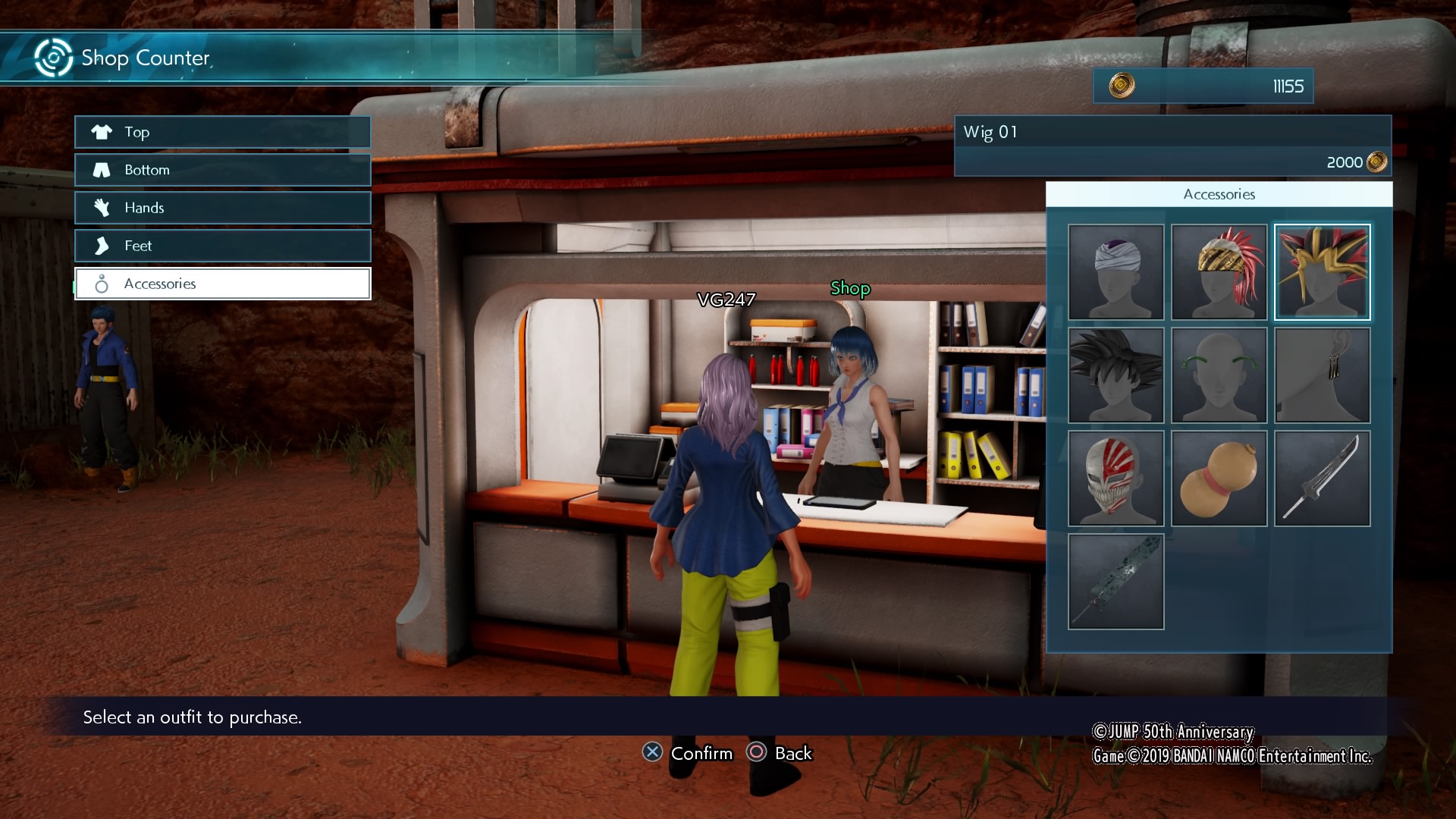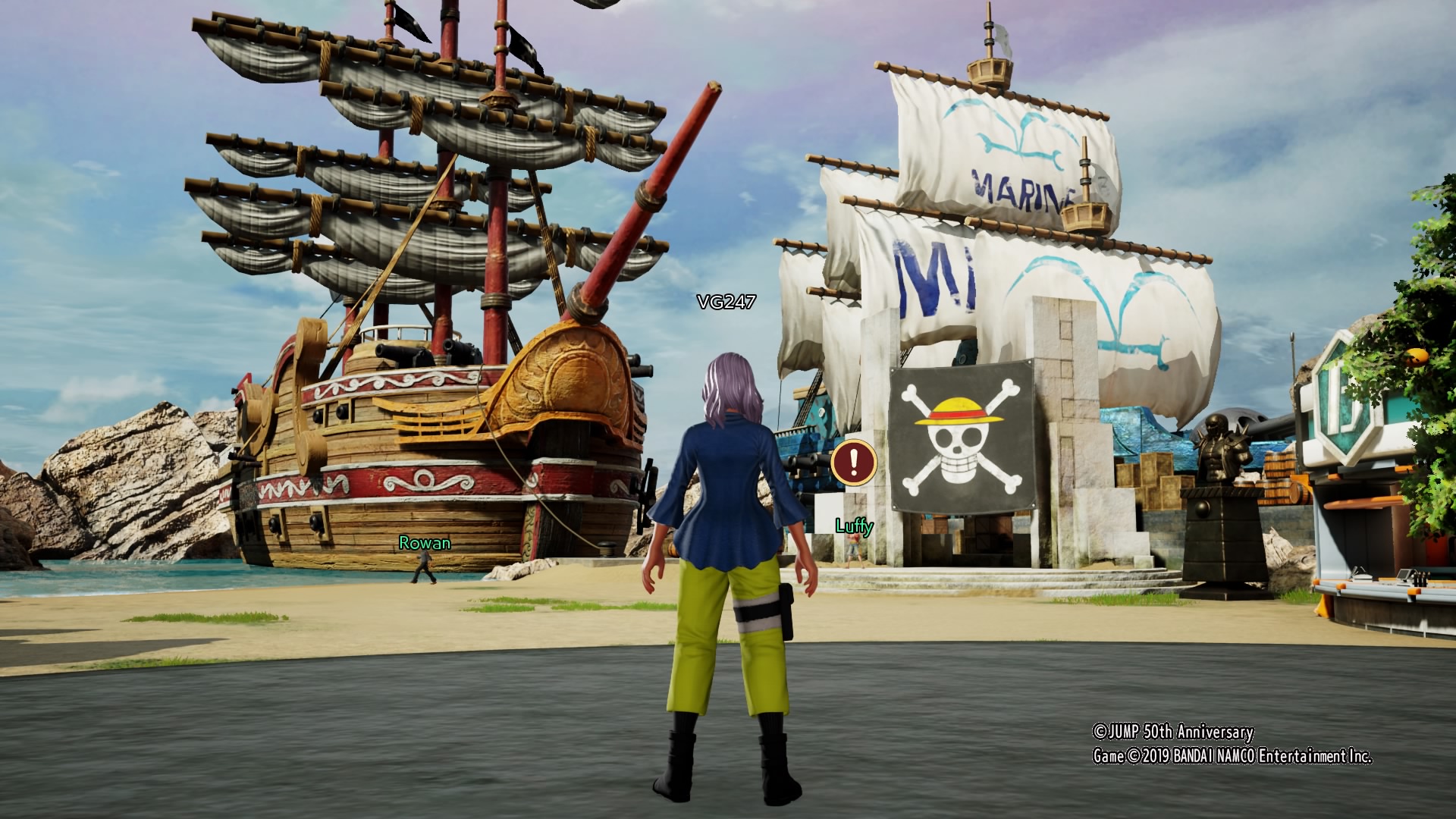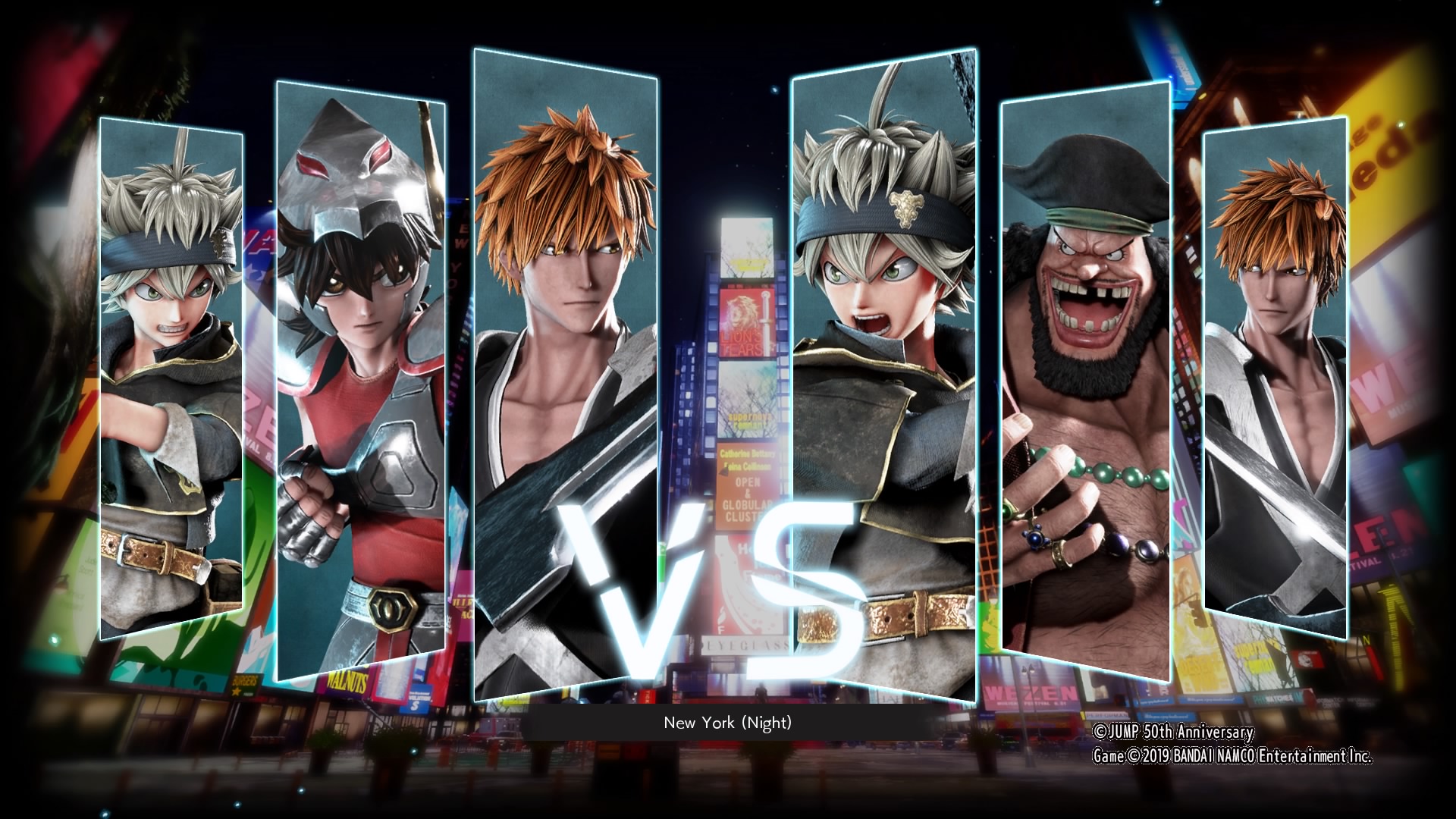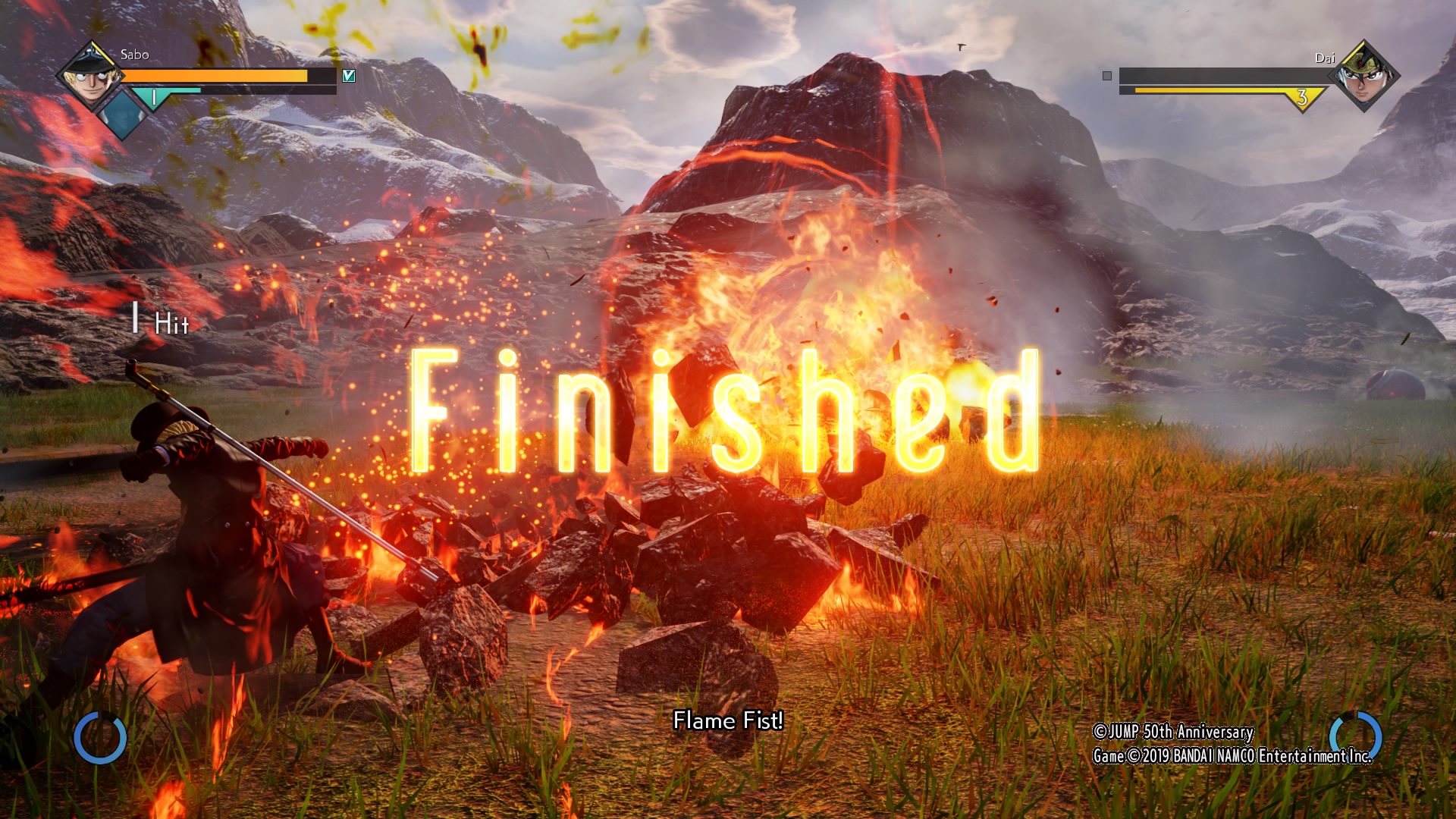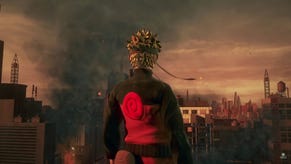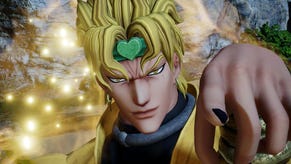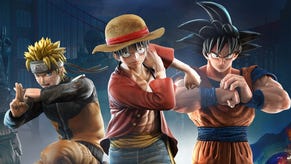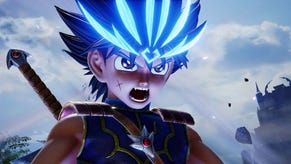Jump Force review - There's Goku, and Luffy, and my favourite Naruto; they're all here!
You don’t get more anime than this.
In the first two minutes of Jump Force, New York has been destroyed by flying people in pants, Goku’s already turned super saiyan, and you’ve been resurrected with a magic cube by a time-traveller with purple hair, a sword, and a robot.
While it’s not a perfect game, Jump Force does its best to make the most of its source material, combining its varied roster of superstars, fan-favourites, and deeper cuts from across Jump history, with a tactical, twitch-heavy combat system.
Jump Force Review
It all starts when you take an energy blast to the face from classic Dragon Ball Z bad-guy, Frieza, only to be saved by Trunks and new Akira Toriyama character, Navigator. Using an Umbras Cube - a mysterious object that imbues humans with superpowers - you’re resurrected as a hero, ready to push back against the Venoms threatening to destroy the world.
The Jump characters have been brought to Earth from their own alternate Jump Worlds by an unknown force. Since you’re no longer dead and have all this newfound strength, you join up with the good guys to solve the mystery of the Umbras Cubes and send everyone home.
The character creator is yet another excuse to turn on the fan-service as you build your avatar from iconic pieces of other characters: Android 18’s bob, Gaara’s gourd, Goku’s boots - there are tons of grin-inducing nostalgia pieces available from the start, with more unlocked as you progress.
They’re not just from playable characters either. You can get the Dark Magician’s outfit, Akatsuki cloaks, even Master Roshi’s beard - the fashion potential is almost endless. That you have to grind in-game gold to buy new pieces is unfortunately a drag - especially as there’s no way to preview expensive, sometimes incompatible items.
Once you’ve got the perfect anime haircut and clothes, you have to decide between Goku, Luffy, or Naruto’s melee style, then choose a team to determine your starting abilities. You can completely customise your skillset at any time while back at base though, so don’t worry about being corralled as you find a style that works for you.
Authentic Anime
We’ve seen Bandai Namco’s other anime games - chiefly the Naruto Ultimate Ninja series - evolve from arcadey 2.5D button-mashers into all-out spectacle fighters over the last decade, and Jump Force is the shiniest and flashiest of them all. The reimagined environments look brilliant - especially the team areas in Umbras Base - and each lightly-destructible fighting stage is packed with detail.
The characters look great too - when they’re standing still at least - although the smoothed-out coalescence of art-styles makes some of the cartoonier heroes like Deku from My Hero Academia go a bit uncanny valley like one of those real-life Pokemon illustrations or that drawing of Kirby with human feet.
The lip-syncing and out of combat cutscenes are hideous, mind you. The heroes come off like they’re those unposable plastic action figures, and it jars badly with the strong in-fight presentation.
Filler Episodes
The voice acting from the original cast is as good as you’d expect, but it’s stretched too thin across the story, with the majority of missions told through silent text boxes. That’s probably my biggest criticism of Jump Force: there’s a lot of filler - just like real anime, really, but you can’t skip the last 80 episodes of Naruto and go straight to Shippuden here.
It’s structured so you alternate between Key Missions and Free Missions as your two main activities.
Free Missions are self-contained fights with special requirements such as winning within a certain time or keeping your health above a certain level. You have access to the game’s full roster for these, and they’re your main method of acquiring extra gold - which you use to buy in-game items - character experience, and J-Skills (equippable buffs for your Avatar).
Key Missions are how you advance Jump Force’s main story. These range from fully-voiced epics to flat single fights. You pick from a depleted list of characters for this mode, but recruit more as you play. For a lot of the game there are roughly ten “filler” missions between voiced parts, and a lot of non-voiced Free and Key Missions in a row can feel like a slog - especially because of the irritating interruption of near-constant loading screens.
This makes Jump Force a much meatier single-player game than comparable western fighters like Injustice 2; you’re not going to breeze through it in a couple of afternoons. With nine chapters in total, you’re at least getting your money’s worth in terms of pure playtime.
But it does feel padded. Jump Force pulls the usual fighting game story tricks of throwing you into unfair fights where the AI’s specials hit like an atomic bomb, while your beam cannons feel like the equivalent of blowing a McDonald’s straw sheath at someone’s head.
If you’re just interested in couch co-op though, it’s worth noting that you have access to local two-player matches with the whole roster almost immediately. No need to grind and unlock all the characters here.
Online Battles are quite laggy in the pre-release build, which makes it difficult to read opponent’s moves. Otherwise they’re remarkably similarly to single-player matches.
Feel the Force
The battle system that underpins the whole of Jump Force will be familiar to fans of the Naruto Ultimate Ninja series. You charge energy and manage your special meters to unleash devastating chains of regular melee and eye-popping special moves. There’s also a big emphasis on twitch-timing to perform extremely powerful high-speed dodge and counter abilities. These dodge and counter attacks break up combos and let you retaliate with your own, so mastering them is vital.
Melee abilities are divided into quick Rush attacks (Square on PS4), and Heavy Blows (Triangle), while holding either turns it into a Smash attack which breaks through guards.
Heavy Blows overpower and go through Rush attacks, so there’s some rock, paper, scissors-style tactics to consider with how you open your combos, as well as directional inputs which add aerial or sweeping moves.
A lot of characters’ melee attacks feel samey, but each character has a unique and impressive special ability that gets across their personality. Each fighter has three normal specials - things like Goku’s Kamehameha, Sasuke’s Chidori, or Yugi’s Dark Magic Attack - along with an Awakening abilities and transformations that can be used after they’ve taken a certain amount of damage. These specials are doled out generously and they really help set the characters apart. However, they also highlight the fact some fighters are noticeably stronger than others.
Heroes that can chain their normal specials together - like Ichigo from Bleach - are very strong in terms of raw damage output. But it’s characters whose specials can be used to counter the opponent who feel the best at this early stage: Naruto’s Six Paths Spar, Cell’s Barrier, and the Saint Seiya characters are early standouts.
One minor gripe is that the in-game tutorials are a little threadbare and fail to communicate some of the more nuanced parts of the combat system, which can lead to frustration. For example, grabs that are chained onto the end of a basic rush combo seem to just pass through an opponent without landing.
Jump start
Some of Jump Force’s missions might feel uninspired, but a lot of love has gone into crafting this fast-paced fighter, which has something to offer fandoms from across Shonen Jump’s storied history.
Spike Chunsoft set out to make the ultimate anime crossover, and with Jump Force, it has succeeded. It’s obtuse, it’s weird, a lot of it doesn’t make any sense, and sometimes it’s down-right boring, but it’s also outlandishly spectacular, stylish, and just silly enough keep a smile on your face as you push your glasses up your nose.
Version tested: PlayStation 4.


